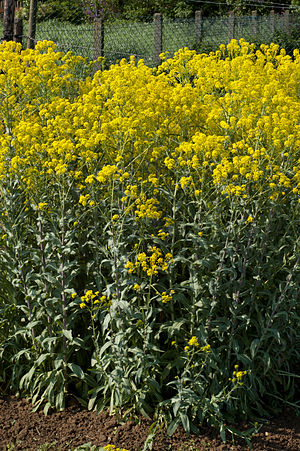[amazon_link asins=’B01LYLBWEW,B00ND0I650,B075786GPX,B0713SHJF9,B074DC5HQ3,B01A2UK31S,B002DXVDQC,B01AN5QOFG,B076KQ7K3V’ template=’ProductCarousel’ store=’finmeacur-20′ marketplace=’US’ link_id=’f2dc401d-b8c8-11e7-b77c-1b6492bd87bf’]
Botanical Name: Alkanna tinctoria
Family: Boraginaceae
Genus: Alkanna
Species: A. tinctoria
Kingdom:Plantae
Synonyms: Anchusa tinctoria.
Common Names: Alkanet, Alkanna, Dyers’ Bugloss, Orchanet, Spanish bugloss or Languedoc bugloss.
Habitat :Alkanna tinctoria is native in the Mediterranean region.It grows on maritime sands, uncultivated ground, calcareous soils and pine forests.
Description:
Alkanna tinctoria is a perennial plant growing to 0.2 m (0ft 8in) by 0.3 m (1ft). It is in flower in June and the flowers are bright blue in colour.The flowers are hermaphrodite (have both male and female organs) The plant has a dark red root of blackish appearance externally but blue-red inside, with a whitish core…….CLICK & SEE THE PICTURES
Cultivation:
Prefers a well-drained sandy or loamy soil in sun or partial shade. Dislikes acid soils but thrives in alkaline soils. A very drought tolerant plant when established, succeeding in a hot dry position, it is a useful plant for dry sandy or alkaline soils. Plants are hardy to about -10°c. This species is occasionally cultivated as a dye plant. One report says that it is cultivated for its seed.
Propagation :
Seed – sow spring in a cold frame. When large enough to handle, prick the seedlings out into individual pots and plant them out in the summer. Division in spring. Fairly easy, they can be planted straight out into their permanent positions if required. Basal cuttings of new growth in late spring. Harvest the young shoots when they are about 10 – 15cm long and pot them up into individual pots in a lightly shaded position in a greenhouse. They should root well within a few weeks and can be planted out in the summer. Root cuttings in late winter.
Edible Uses :
Edible Parts: Leaves are said to be used as a vegetable. A red dye obtained from the roots is used as a food colouring.Alkanna tinctoria is traditionally used in Indian food under the name “Ratan Jot”, and lends its red colour to some versions of the curry dish Rogan Josh. In Australia alkanet is approved for use as a food colouring, but in the European Union it is not.
Medicinal Uses:
The root is antibacterial, antipruritic, astringent and vulnerary.It is used externally in the treatment of varicose veins, indolent ulcers, bed sores and itching rashes. Used internally to treat cough and bronchial catarrh (see known hazards below). Used in the treatment of skin wounds and diarrhoea .The root is harvested in the autumn and can be dried for later use. All plant parts are demulcent and expectorant.
Other Uses: The root produces a fine red colouring material which has been used as a dye in the Mediterranean region since antiquity. The root as a dyestuff is soluble in alcohol, ether, and the oils, but is insoluble in water. It is used to give colour to wines and alcoholic tinctures, to vegetable oils, and to varnishes.
Powdered and mixed with oil, the alkanna tinctoria root is used as a wood stain. When mixed into an oily environment it imparts a crimson color to the oil, which, when applied to a wood, moves the wood color towards dark-red-brown rosewood, and accentuates the grain of the wood. It has been used as colorant for lipstick and rouge (cosmetics).
In alkanna tinctoria environments the alkanna tinctoria dye has a blue color, with the color changing again to crimson on addition of an acid. Hence, it can be used to do alkali-acid litmus tests (but the usual litmus test paper does not use alkanna tinctoria as the agent).
The colouring agent in alkanna tinctoria root has been chemically isolated and named alkannin.
Known Hazards: Hepatotoxicity (liver toxicity) and carcinogenicity. Many members of this plant family contain a liver-damaging alkaloid and so internal usage is inadvisable.
Disclaimer : The information presented herein is intended for educational purposes only. Individual results may vary, and before using any supplement, it is always advisable to consult with your own health care provider.
Resources:
http://www.pfaf.org/user/Plant.aspx?LatinName=Alkanna+tinctoria
http://en.wikipedia.org/wiki/Alkanna_tinctoria












